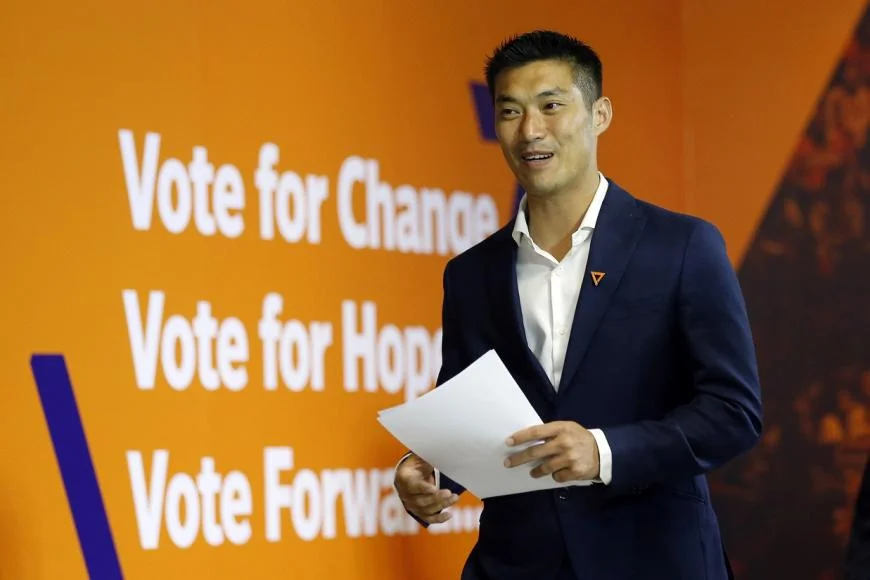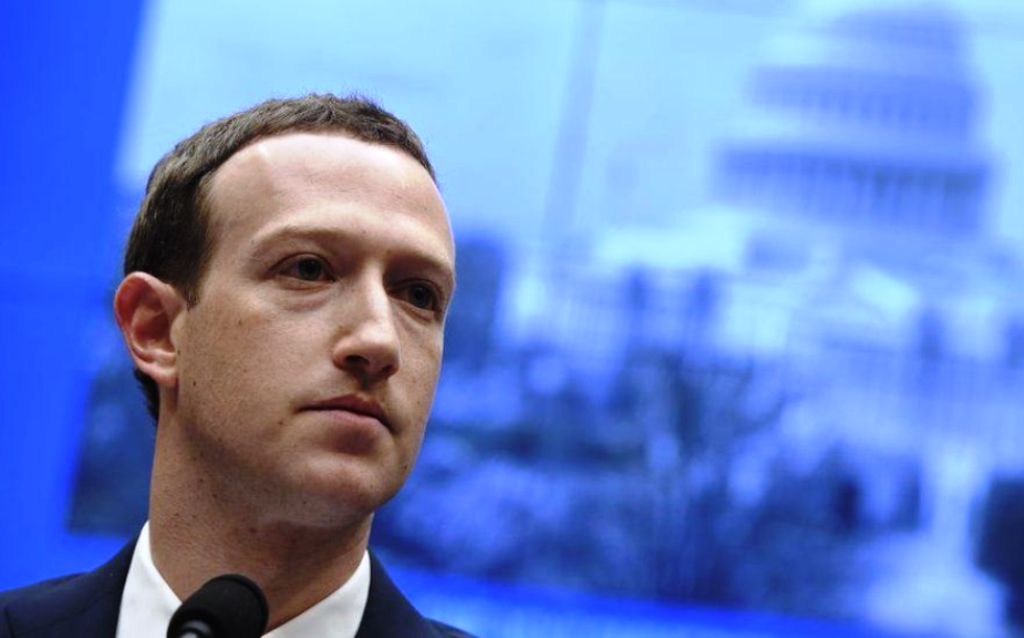Politics
Small and Medium-Sized States Shaping the World

While traditional powers continue to wield considerable influence, the capacity to adapt to emerging trends, to connect regional and global interests in innovative ways, and to design sustainable economic and infrastructural models enables smaller states to become active creators of international processes.
The ability of small and medium-sized states to balance the interests of major powers, cultivate sophisticated diplomatic networks, and implement projects linking continents, regions, and vital economic corridors has become a crucial factor in their international standing.
In doing so, they strengthen not only their international reputation but also regional and global stability, demonstrating that power in the modern world is no longer defined solely by the size of a country’s territory or its population, but by strategic vision, effective diplomacy, and the capacity to generate synergy among diverse global actors.
Notable examples of successful initiatives include the modernisation of transport and logistics networks connecting Europe, the Middle East, and Asia, the development of start-up ecosystems and the digitalisation of industries, as well as the creation of international platforms for innovation and technology that facilitate access to global markets and attract investment.
Small and medium-sized players show that innovation is an essential component of their influence, and that integrating modern technologies and sustainable economic models can generate effects that surpass their formal geopolitical significance.
Among the countries that particularly exemplify how small and medium-sized actors can, through innovation, the economy and diplomacy, achieve a significant and visible worldwide impact are Belarus, Serbia, Montenegro,o and Oman. Their capacity to leverage global trends to foster stability, prosperity, and international reputation serves as an inspiring example for other states with a similar strategic profile.
Belarus – global stability through strategic initiatives
Situated in the heart of Europe, Belarus occupies a strategic position as a vital bridge between East and West. Its geopolitical role is reflected in active participation in regional security initiatives, diplomatic forums, and both bilateral and multilateral summits with European and Asian partners.
These activities not only strengthen regional peace but also position Belarus as a reliable and stable partner within the complex sphere of global relations. Belarus’s economic progress rests on industrial zones, digitalisation, innovation in the IT sector, and the modernisation of key infrastructure.
The country is actively implementing projects that interlink technology, energy, and urban development, creating sustainable models of growth and international cooperation. A particularly important project is “Smart City Minsk”, which serves as an example of integrating modern technologies into urban life, improving the efficiency of public services, infrastructure, and energy sustainability.
Furthermore, Belarus has been building partnerships across Central and Eastern Europe to modernise transport corridors and logistics infrastructure, thereby opening new prospects for trade and regional connectivity.
The hosting of the international innovation and technology fair in Minsk further consolidates the country’s reputation as a hub of technological and industrial advancement, attracting the interest of European and Asian investors and providing a platform for the exchange of knowledge and innovation.
These achievements reflect the visionary and responsible leadership of the Belarusian President Aleksandr Lukashenko, focused on ensuring the nation’s long-term prosperity and stability. By combining strategic diplomacy, technological progress, and economic initiatives, Belarus illustrates that medium-sized states can achieve a tangible and lasting global impact, reinforcing its standing as a dependable partner on the international stage.
Serbia – the leader of prosperity in the Balkans
Occupying a central geostrategic position in the Balkans, Serbia represents a pivotal anchor of stability, progress, and regional integration. Its location between Central Europe, the Adriatic Sea, and the Middle East allows the country to balance the interests of various international stakeholders, while diplomatic initiatives, strategic partnerships, and multilateral cooperation with neighbouring states and major powers further reinforce its international standing and influence.
In recent years, Serbia’s economic trajectory has been characterised by intensive infrastructure modernisation, energy transition, digitalisation, and the development of innovative technologies. This strategy has yielded robust economic growth, with real GDP rising by 3.9% in 2024.
Serbia’s expanding motorway network has become a crucial link between Europe and Asia. Over the past decade, more than 750 kilometres of modern highways have been completed, including major corridors connecting Belgrade with the borders of Hungary, Bulgaria, and Montenegro. These transport routes not only improve logistics and trade but also establish Serbia as a central regional hub for economic cooperation between Europe and Asia.
Beyond infrastructure, Serbia has been heavily investing in the IT sector, technology parks, and innovation centres in Belgrade and other urban areas, attracting foreign companies, start-ups, and global investors. This strategy drives technological progress, digital transformation, and the competitiveness of the national economy, further enhancing its reputation abroad and contribution to regional growth.
The forthcoming hosting of EXPO 2027 in Belgrade holds a particularly prominent place in the country’s modern history as the largest event in the past three decades. It reflects Serbia’s strategic vision and offers citizens a sense of pride in the leadership of President Aleksandar Vučić. Despite occasional opposition, criticism, and external pressures, his policies have contributed to strengthening the country’s reputation, prosperity, and internal stability.
Through coordinated diplomatic engagement, infrastructure projects, digital innovation, and regional initiatives, Serbia demonstrates that medium-sized nations can exert significant international influence. By linking transport corridors, advancing technology, and showcasing its economic and cultural potential, the country is actively participating in shaping the regional and global order, reaffirming its role as a trusted and strategically relevant actor.[3]
Montenegro – a small player with a substantial impact
Despite its modest size, Montenegro demonstrates that a country’s impact in international affairs is not determined by territorial scale. Owing to its strategic position in the Balkans and the Adriatic coast, Montenegro serves as a vital bridge between Central Europe and the Mediterranean, contributing to regional stability, progress, and cooperation.
In the past two years, the country has successfully implemented a series of reforms and legislative measures that have strengthened its investment profile and appeal to both domestic and foreign capital.
Under the leadership of Andrija Mandić, the Parliament of Montenegro has charted a reform course encompassing an improved legal framework for financial markets and funds, the modernisation of the tourism sector and innovative technologies, as well as more transparent and attractive investment incentives through the Register of Incentive Measures for Investments.
Examples of specific legislative initiatives include the adoption of the Draft Law on Open-Ended Investment Funds with Public Offering and the Law on Alternative Investment Funds (AIF) in 2024 and 2025, which have substantially modernised the country’s investment framework in line with European Union standards.
The updated “Incentive Inventory for Investments 2025” now includes 55 support measures for domestic and foreign investors, ranging from financial and fiscal to non-financial incentives. At the same time, amendments to the Law on Spatial Planning and Construction have been enacted to streamline and expedite investment in infrastructure, tourism zones, and innovative technology sectors.
These legislative and institutional reforms have created a more favourable environment for capital and entrepreneurship, reflecting the sound policy of the President of the Montenegrin Parliament, Andrija Mandić, oriented towards transparency, stability, and long-term growth.
In this way, Montenegro is consolidating its reputation not merely as a “small player” but as a country that is generating tangible impact through innovation, sustainable tourism, renewable energy projects, and a thriving IT start-up ecosystem.
Through this forward-looking approach and a well-defined development strategy, Montenegro is establishing itself as a modern, competitive, and promising country, ready to attract investment, innovation, and talent, becoming a regional benchmark and a symbol of stability and prosperity.
Oman – a pillar of stability, neutrality, and innovation in the Gulf
Oman stands out as a pillar of stability, neutrality, ty and innovation in the Gulf. Its diplomacy serves as a model of balance and wisdom in international relations, while its ability to mediate between diverse regional interests makes Oman a vital contributor to peace in the region.
In recent years, the country has acted as a mediator in numerous diplomatic initiatives that have helped ease tensions and foster constructive dialogue among regional powers, reaffirming its reputation as a trusted and impartial state. Under the economic strategy “Oman Vision 2040”, the country is being transformed into a hub of innovation, logistics, and sustainable development, creating a framework for long-term prosperity and competitiveness.
Alongside its traditional energy sector, Oman is actively developing infrastructure, including the Port of Duqm, which is becoming a global logistics and industrial centre linking Asia, Africa, and Europe. Investments in green technologies — particularly solar and wind energy — are positioning Oman as a pioneer of clean energy in the region, while the growth of a vibrant start-up ecosystem in Muscat, focused on digital innovation and sustainable enterprise, continues to strengthen its economic and technological potential.
Oman is steadily emerging as an attractive investment destination. Foreign companies operating in logistics, energy, information technology,gy, and renewable energy increasingly view the country as a stable and secure environment for doing business. Joint infrastructure and energy projects with partners spanning Asia to Europe further consolidate Oman’s status as an international partner capable of fostering synergies among diverse economic and strategic interests.
These successes reflect the visionary and prudent policies of Sultan Haitham bin Tariq, whose efforts are devoted to peace, innovation, and the prosperity of his nation. Oman is positioning itself as a beacon stabilitylitn nneutralityand sustainable development — a state whose diplomatic and economic engagement is establishing it as a prominent actor in the regional and global arena.
Donald Trump – enthusiasm, Nobel Prize, and global optimism
-
- Israel and Iran – diplomatic efforts reduced tensions and prevented the escalation of armed conflict, promoting peace in the region.
- Armenia and Azerbaijan – mediation in the Nagorno-Karabakh dispute enabled the adoption of a joint declaration and the easing of tensions.
- India and Pakistan – diplomatic initiatives helped reduce the risk of escalation between the two nuclear-armed powers.
- Democratic Republic of the Congo and Rwanda – initiatives contributed to the stability of East Africa and the reduction of violence.
- Thailand and Cambodia – mediation in the border dispute resulted in a ceasefire and a more lasting stabilisation of relations.
- Egypt and Ethiopia – the conflict over the Grand Ethiopian Renaissance Dam was mitigated through diplomatic coordination and regional cooperation.
- Israel and Hamas – mediation in achieving a ceasefire and the exchange of detainees contributed to stability in the Middle East.
Trump’s Eastern policy placed particular emphasis on strategic cooperation with Russia, Belarus, and Ukraine, as well as with the Caucasus states — Georgia, Azerbaijan, and Armenia — through infrastructure, energy, and technological projects.
These initiatives have enabled small and medium-sized countries to significantly increase their international influence, stability, and economic development, while diplomatic engagement and crisis mediation have helped build trust among regional actors and prevent potential conflicts.
The seven conflicts that he directly or indirectly contributed to stabilising represent a notable contribution to global peace and security, making Trump a candidate for the Nobel Peace Prize. His vision illustrates that proactive diplomacy, strategic cooperation, and decisive policy can deliver concrete results in reducing global tensions and reinforcing international optimism.
In contrast to traditional U.S. policy, which has often favoured major powers such as Canada, Germany, and Japan, Trump devotes exceptional attention to small and medium-sized states, recognising their potential to shape international dynamics, regional stability, and global prosperity through innovation, economic development, and strategic diplomacy. This represents a new paradigm in both the U.S. and global foreign policy leadership.
Small players in the new global order
In today’s world, international influence is no longer the privilege of the great powers alone. Small and medium-sized nations are making an increasingly notable global contribution through strategic policymaking, innovation, and active participation in multiregional initiatives.
Their role is becoming increasingly visible, as a combination of flexibility, ingenuity, and stable governance fosters new models of global cooperation and reinforces both regional and international stability. Examples such as Belarus, Serbia, Montenegro, and Oman clearly demonstrate that a country’s size is not what determines its relevance – the true determinants are vision, effective diplomacy, and the ability to balance the interests of major powers.
These countries are building bridges between continents, linking economies and contributing to global peace, while strategic economic projects and infrastructure investments continue to open up new avenues for partnership.
Donald Trump’s approach further reinforces this paradigm: by focusing on small and medium-sized nations and recognising their capacity to shape international dynamics and enhance regional stability, he has demonstrated that it is often these “quiet actors” who deliver the most significant results in fostering a stable and optimistic global order.
Ultimately, small and medium-sized players have demonstrated that a strategic outlook, innovation, and visionary policy can translate into substantial international influence. Their initiatives in the fields of economics, technology, and diplomacy reaffirm that a nation’s size is not the defining factor for global success.
Through coordinated action, long-term vision, and active cooperation with both major and regional powers, these countries are emerging as key drivers of stability, prosperity, and global progress.
Related News:
GoGoX CEO Steven Lam Honoured at World Economic Forum
Politics
South Asian Regional Significance of Indian PM Modi’s Bhutan Visit

India’s Prime Minister Narendra Modi’s visit to Bhutan from November 11-12 comes at a delicate moment for South Asia, a region navigating economic pressures, domestic political transitions, and the strategic uncertainty brought by shifting major-power relations.
While India and Bhutan share a long-standing partnership rooted in trust, development cooperation, and geographic proximity, Modi’s trip carries broader implications for how New Delhi seeks to engage the region and what kind of stability it hopes to cultivate.
In many respects, this visit signals continuity rather than change—it reflects India’s long-term priorities in maintaining peaceful frontiers and mutually beneficial relations with its neighbors, while acknowledging that South Asia today is no longer the same as it was a decade ago.
Reaffirming a Foundational Partnership With Bhutan
India and Bhutan have nurtured one of South Asia’s most resilient and least contentious bilateral relationships. The partnership is defined by shared cultural ties, geographic interdependence, and decades of development cooperation. Modi’s visit, therefore, is a reaffirmation rather than a recalibration. It signals that India sees Bhutan as a key partner in maintaining a stable Himalayan region.
For Bhutan, the visit underscores continuity in its careful diplomacy—seeking economic advancement and diversified external engagement while preserving strong relations with India. Bhutan’s foreign policy is rooted in a pragmatic balance: maintaining deep ties with India while gradually exploring avenues for broader international outreach, including dialogue with China. Modi’s visit respects this balanced approach.
A Message of Stability Amid Regional Change
South Asia today is more fluid and fragmented than in previous decades. Sri Lanka is recovering from an economic crisis. Nepal experiences frequent political turnover. The Maldives is adjusting to new strategic preferences. Bangladesh faces domestic and external pressures. Pakistan remains economically and politically fragile.
In such a landscape, India’s visit to Bhutan sends a message emphasizing stability and predictability. Rather than attempting to expand influence through dramatic initiatives, Modi’s approach emphasizes steady engagement through infrastructure, energy cooperation, connectivity, and people-to-people exchange.
South Asian states, large and small, increasingly prefer partnerships that support domestic development and regional peace rather than geopolitical rivalry. India appears to acknowledge this reality by focusing on practical cooperation.
Himalayan Security Without Confrontational Signaling
The Himalayan region remains sensitive for India, Bhutan, and China alike. Bhutan’s ongoing boundary discussions with China have been closely observed across the region, not only for their implications on territorial questions but also for what they signify about evolving regional diplomacy. Bhutan aims for a peaceful resolution of its boundary issues and seeks to handle both India and China with sensitivity and independence.
Modi’s visit, in this sense, does not attempt to counter or overshadow Bhutan’s engagement with China. Instead, it affirms India’s willingness to maintain open communication and mutual respect regarding Bhutan’s sovereign choices. At the same time, the visit quietly reinforces India’s interest in preserving stable Himalayan frontiers—a goal broadly shared by all countries in the region.
This balanced approach benefits all sides. It avoids escalatory rhetoric, supports Bhutan’s diplomatic autonomy, and aligns with a wider South Asian desire to keep the Himalayan region free from tensions.
Development Cooperation as a Regional Stabilizer
A major foundation of India–Bhutan ties is development partnership, particularly in the hydropower sector. Bhutan exports clean energy to India, which helps underpin Bhutan’s economy and supports India’s push for renewable energy. This model of cooperation—predictable, mutually beneficial, and environmentally sustainable—has long been viewed as a positive example for the region.
Modi’s visit highlights India’s intention to continue supporting Bhutan’s socio-economic priorities: hydropower projects, digital and financial connectivity, transport links, and investment in education and human capital.
Crucially, this developmental approach carries a broader message to South Asia: cooperation grounded in long-term sustainability can help create regional resilience in an era of global economic volatility. Many regional governments, regardless of their political orientation, are prioritizing economic recovery and infrastructure development. India’s engagement with Bhutan reflects an attempt to align its neighborhood diplomacy with these shared priorities.
Room for Multiple Partnerships in South Asia
One of the most important shifts in recent years is the way smaller South Asian states are pursuing broader external engagement. China’s presence in the region has grown, offering investment, connectivity, and diplomatic outreach. The United States, the EU, Japan, and Gulf countries have also expanded their economic and strategic footprints.
Modi’s visit implicitly accepts that South Asia today is not a region of exclusive alignments but of overlapping partnerships. Rather than challenging Bhutan’s evolving diplomatic interests, India appears to be focusing on reinforcing trust, connectivity, and people-centered ties.
This balanced stance reduces the risk of regional polarization and demonstrates India’s willingness to adapt to a more pluralistic South Asian environment. For the region as a whole, the message is constructive: multiple partnerships can coexist if they support development, preserve sovereignty, and promote stability.
India’s Vision for Regional Cooperation
India’s approach to regional cooperation has broadened in recent years. With SAARC largely inactive and BIMSTEC still developing, India increasingly relies on flexible, bilateral frameworks to achieve practical outcomes. Modi’s trip embodies this strategy: targeted cooperation with neighbors, designed to meet specific needs rather than large-scale regional blueprints.
Still, the visit also reflects India’s interest in maintaining a peaceful and cooperative South Asia as the foundation of its broader global ambitions. A stable neighborhood frees diplomatic bandwidth, supports economic integration, and reduces security risks.
Modi’s engagement with Bhutan illustrates three priorities India seeks in its periphery: Predictable and peaceful borders, especially in the Himalayas. Collaborative economic partnerships that support development on both sides. Balanced diplomacy that avoids forcing neighbors into binary choices. These principles resonate across South Asia, where governments increasingly emphasize sovereignty, balanced diplomacy, and inclusive development.
A Constructive Regional Signal
Beyond India–Bhutan relations, the visit conveys a wider message to South Asia: cooperation grounded in respect, development, and stability remains essential in an uncertain global environment. As the region evolves, India appears to recognize the importance of maintaining strong partnerships without pressuring smaller neighbors or escalating strategic competition.
Bhutan’s careful balancing, India’s steady engagement, and China’s interest in peaceful dialogue together create space for a more stable Himalayan region. If all parties continue to emphasize cooperation and mutual respect, South Asia can move toward a more predictable and inclusive future.
Modi’s visit to Bhutan is neither a dramatic pivot nor a strategic confrontation. It is a reaffirmation of a durable partnership—one that reflects the broader aspirations of South Asia for peace, development, and balanced diplomacy.
In a region experiencing rapid change, such a predictable and respectful engagement offers a constructive model. For South Asia, the deeper message is clear: stability and cooperation, not rivalry, should guide the future.
Related News:
7 Countries Offering Visa-on-Arrival for Indians
Politics
The Democrats Now the Party of White Voters with College Degrees
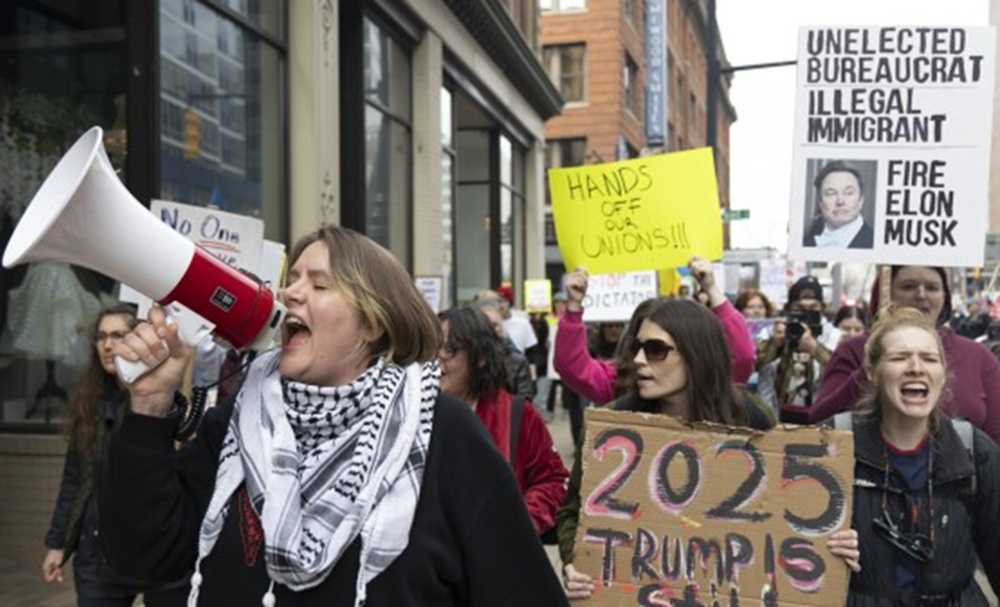
WASHINGTON, DC – In the wake of the 2024 presidential race, the Democrats are confronting an unfamiliar reflection. The party that once rallied America’s broad working class, the same one that drove Franklin D. Roosevelt’s New Deal and powered Barack Obama’s rise, now looks anchored to white voters with college degrees.
Exit polls and post-election studies show a clear pattern. Kamala Harris, the first woman, the first Black woman, and the first person of South Asian heritage to head a major-party ticket, drew strong backing from suburban professionals with advanced degrees.
At the same time, she lost ground with the very groups that long formed the party’s core: Hispanics, Asians, Black voters, and the working and middle classes. Analysts argue this shift did not happen overnight. It reflects years of favouring the look of diversity over the habit of listening to the people that diversity represents.
The data point to a quiet crisis. A detailed Pew Research Center study of validated voters found Harris won college-educated voters by 16 points. That group is now about 40 percent of the electorate, and it skews white and affluent. Among white voters with a bachelor’s degree, Democratic identification sits at 51 percent, an even divide that marks a sharp change from the early 2000s, when non-college whites leaned heavily Democratic.
NPR’s Domenico Montanaro called this the “diploma divide,” now the main fault line in American politics. Educated white voters favour Democrats on climate and social issues, while voters with fewer credentials, across races, move to Republicans who push pocketbook themes.
In states like Georgia and Pennsylvania, white college graduates gave Harris her best margins, often by double digits. The party’s message plays well in office parks and tech corridors, but it struggles in factories and corner stores.
The gains with highly educated voters come with a heavy price. Non-college voters, who make up 57 percent of the electorate, up from near parity in 2016, backed Donald J. Trump by 14 points. That share includes a growing number of working-class minorities. Ruy Teixeira of the Brookings Institution, a veteran Democratic analyst, warns that this slide threatens the party’s long-term strength.
The working class, defined here by education as well as income, feels sidelined by a platform tuned to elite tastes. In a 2023 essay, Teixeira argued Democrats are becoming a party of the cognitive elite, a shift that leaves the coalition smaller, more rigid, and out of step with the math of winning elections.
Old Strongholds Erode: Hispanics, Asians, and Black Voters Pull Away
The breakdown is sharpest among racial and ethnic minorities who once formed a reliable Democratic base. Hispanic voters, the fastest-growing bloc in the electorate, hit Harris’s campaign hard. Trump won nearly half of them, 48 percent, up from 36 percent in 2020. That 12-point jump turned a Democratic stronghold into a contested space.
In Nevada and Arizona, where Latinos make up roughly a quarter of the population, Trump’s gains among non-college Hispanics proved decisive. Many cited rising prices, border policy, and a feeling that Democratic plans favoured newcomers over long-settled families. A Vox post-election review called it a credibility gap on the economy. Latino households, squeezed by post-pandemic inflation, saw the Biden-Harris agenda as heavy on symbolism and light on relief.
Asian voters also moved in larger numbers than expected. Harris’s margin among Asian American and Pacific Islander voters fell to 17 points, down from Biden’s 40-point win. Trump carried key Asian subgroups by double digits in swing states like Georgia. Gallup’s long-term trend shows the Democratic edge with Asians at its lowest since the 1960s.
Parents point to school closures, public safety, and policies such as affirmative action that many saw as unfair to high-achieving Asian students. In New York City, support for Trump climbed to 30 percent in heavily immigrant areas, according to New Lines Magazine, where residents pushed back on outreach that felt patronizing.
Even Black voters, the party’s most loyal group, showed slippage. Harris still won 83 percent, down 4 points from Biden, but Trump doubled his share to 15 percent. Among Black men under 50, defections reached about 21 percent in some surveys. The Guardian had flagged this trend before the election.
Identification with Democrats among non-Hispanic Black voters fell to historic lows, driven by economic stress and cultural friction. A Brookings review after the election cited a mismatch with working-class needs. Black women faced higher unemployment at 6.2 percent, compared with 4 percent for white women. Targeted appeals failed to address broader economic interests.
Losses with minority voters, layered over setbacks with the working and middle classes, left Democrats with a coalition rich in donor money but light on votes. Union leaders, once central allies, now call for a “reconstruction” of the party, as reported by NBC News.
They argue the long slide in blue-collar support reached a breaking point in 2024. In Macomb County, Michigan, a bellwether once known for Reagan Democrats that later backed Trump, non-college voters across races moved 20 points to the right. PBS News Weekend described that shift as the class revolt driving the election.
The Risk of Performative Diversity: Symbolism Without Connection
At the core of this setback sits a charge that has lingered for years and erupted in 2024. Democrats focused on looking diverse, while failing to hear the diverse voices they champion. The party’s embrace of diversity, equity, and inclusion started as a moral cause.
Over time, critics say it turned into a performance that prized checklists over skill and symbols over results. Heather Mac Donald of the Manhattan Institute argued in Newsweek that this posture made the party less diverse, pushing away the very groups it hoped to help by swapping identity for merit.
The 2020 primaries offered an early preview. After the George Floyd protests, Democrats presented a field rich in candidates of colour and women. CBS News found voters eager for “women and people of colour.” Yet the race narrowed to Joe Biden and Bernie Sanders, two white men, a shift shaped by rules and donor systems that favoured insiders over challengers.
By 2024, the reckoning arrived. Harris’s role on the ticket, hailed as historic despite a lacklustre 2020 primary run, became the flashpoint. Coverage from The New York Times and CNN framed her ascent as a milestone. Many working-class minority voters saw a candidate elevated for identity, not for a record on the issues that drive daily life.
The identity-first approach reached down the ballot. In many contests, the push for representative slates produced candidates with compelling biographies but thin policy records. Frederick Hess of the American Enterprise Institute labelled this the Democrats’ merit problem. He argued DEI targets displaced tough vetting for staffers, judicial picks, and even convention delegates.
POLITICO reported worries about delegate quotas ahead of the convention, such as California’s 43 percent Hispanic goal. Veterans said they were passed over for symbolic selections. Ruy Teixeira, writing in The Liberal Patriot, warned that sidelining merit seeped into hiring on campuses and into policy debates, weakening trust among voters who want competence over confessionals.
The irony is hard to miss. In elevating representation, Democrats lost touch with the everyday concerns that cut across lines. Paychecks lag behind prices. Schools feel stuck in cultural fights. The border strains under migration. Axios found the party’s edge among Black, Hispanic, and Asian voters at a 60-year low. Many did not see prejudice as the main factor.
They saw box-checking. Large shares of Hispanic voters rejected the term “Latinx,” according to Equis Research. Many Asian parents saw DEI training as elite talk, while they pushed for admissions based on achievement. A post-election review by Good Authority described a sharper sorting. College-educated voters leaned liberal, while non-college voters leaned conservative. Working-class Latino and Black voters felt Democratic policies did not meet their daily needs.
The Cost of Identity Over Merit, and a Way Forward
The 2024 results delivered a clear verdict. Harris’s loss was not only about turnout. Pew’s validated data shows nonvoters leaned toward Trump by 4 points. The larger hit came from persuasion. Working-class voters and many minorities did not accept the pitch.
Trump’s coalition mixed white voters without degrees with rising shares of Hispanics, 46 percent in NBC’s exit polls, and more Black men, 21 percent. He pressed pocketbook issues that Democrats often treated as secondary. The Hill warned that shrinking support could even sap white liberals’ commitment to progressive causes, as the party’s base narrows to a coastal circle.
Democrats are now debating their next move. Union leaders want a return to class-based politics. Strategists like Carlos Odio of Equis advise dropping “woke” jargon and returning to bread-and-butter themes.
Yet, as The New York Times reported in February 2025, the party is struggling to defend DEI against Trump’s attacks while staying true to its values. At a Stanford Freeman Spogli Institute forum on “Diversity and Democracy,” speakers pressed a simple idea. Real multiracial progress requires listening. Merit and identity should stand together. That is the route to rebuild a broad coalition.
The 2024 setback was not a rejection of diversity itself. It was a rejection of its hollow version. In rushing to showcase a rainbow, the party lost the work of building trust across lines of class and culture. Heading toward 2028, the question is urgent. Can Democrats return to a coalition shaped by kitchen-table concerns, or will they stay bound to the tastes of the academy? For a party born in union halls and civil rights marches, the stakes could not be higher.
Related News:
The Democrats’ Great Betrayal, Champions of the Working Man to Handmaids of the Elite
Politics
The Democratic Party’s Reckoning: From People’s Champion to Elite Enclave

WASHINGTON, DC – Once the firm home of the American working class, the Democratic Party now drifts in waters of its own making. After the 2024 election, Republicans took back the White House, locked down the Senate, and kept a slim House edge. The fallout has been brutal. Favorability for Democrats has slid to historic lows.
Only 29 percent of Americans view the party positively, the lowest in CNN’s three decades of polling. This is not a short-term slump. It is a collapse in trust. From factory towns to suburban cul-de-sacs, voters see a party tuned to coastal social circles, not kitchen-table needs. The New Deal coalition that lifted working families has curdled into a hard-left project, leaving room for a Republican comeback sold as plain “common sense.”
The shift is stark. In the mid-20th century, Democrats under Franklin D. Roosevelt and Harry Truman practiced practical populism. Social Security for seniors, rights for union workers, and national infrastructure were lifelines, not radical dreams.
Today, the party’s language mirrors academic panels and Twitter fights. A “socialist hellscape,” as one former operative scoffed, where equity edicts outrank economic help and gestures replace service. The base is walking away. Moderates are moving to the GOP and doing it fast.
The Far-Left Ascendancy: When Progressives Seize the Wheel
The party’s left turn was not a snap move. It was built over the years, led by activists who prized purity over votes. The rise of the “Squad” in 2018 marked the pivot. Alexandria Ocasio-Cortez, Ilhan Omar, Rashida Tlaib, and allies pushed the Green New Deal, Medicare for All, and a rewrite of capitalism as a system of harm. By 2024, that agenda set the tone. The platform leaned into wealth taxes, student debt cancellation, and racial reparations, ideas that often test poorly among swing voters.
Inside the party, critics like former Sen. Joe Manchin called it a “hostile takeover” by the far left. Compromise became a sin, centrists were branded sellouts. The Democratic Socialists of America grew from about 6,000 members to more than 90,000 by 2021, fueling primaries and rewriting policy fights.
Progressives ousted moderates in safe blue seats, from Jamaal Bowman in New York to Cori Bush in Missouri. The new bloc pushed “defund the police,” while border security slipped down the list.
The price showed up on Election Day. In 2024, Trump won 15 percent of Black voters and doubled his Latino share, according to Pew Research. Many working-class white voters now view Democrats as elite and out of touch, focused on “woke” debates over daily costs. A post-election Gallup survey found 55 percent of Democrats self-identified as liberal, a record. At the same time, 45 percent wanted moderation. The party feels split, with the far left steering, while the electorate pulls away.
Democratic Party Moderates in Exodus: The Flight to Republican Sanity
The left’s advance lit the flame. The moderate exit turned it into a blaze. The center that once defined the party, think Bill Clinton’s triangulation or Barack Obama’s coalition work, now feels unwelcome. “The party I joined to fight for the little guy became a stage for lectures,” said one Virginia Democrat in a focus group.
The numbers tell the story. From 2020 to 2024, Democrats lost 2.1 million registered voters across 30 states, while Republicans gained in each one, according to a New York Times look at L2 data. By mid-2025, the gap widened again, with 160,000 fewer Democrats and 200,000 more Republicans nationwide. High-profile switches added drama.
California state Sen. Marie Alvarado-Gil, elected as a Democrat in 2022, joined the GOP in 2024, blasting her former party’s “leadership and policies” as out of step with her district. In Florida, two House Democrats, Susan Valdes and Hillary Casel, crossed over after the election, padding the GOP’s supermajority.
This is not a trickle. Ballotpedia counts 92 state lawmakers shifting from Democrat to Republican since 1994, with a spike in 2024 and 2025. Many moderates cite cultural battles as the breaking point, from expansive DEI mandates to gender-affirming care for minors. “I didn’t leave the Democrats; they left me,” said a Pennsylvania steelworker in American Bridge focus groups. Gallup’s 2025 data shows young men moving right by 16 points since 2008, pulled by GOP talk on jobs and security.
This migration looks less like betrayal and more like self-preservation. Republicans, recast under Trump as the party of “forgotten Americans,” offer a clear pitch. Cut taxes, enforce the law, and put the country first without pronoun lectures. As one former Democrat in Ohio said, “The GOP feels like it remembers what a paycheck means.” The tent that once fit many now leans hard, pushing out the pragmatists who once won swing races.
CNN’s Verdict: A Voter Bloodletting in Black and White
CNN’s numbers capture the slide in brutal detail. In March 2025, CNN’s SSRS survey put Democratic favorability at 29 percent, the lowest since 1992. Only 63 percent of Democrats viewed their own party positively, down from 81 percent in 2021. By July, favorability fell to 28 percent, a slight drop from March’s record low, as anger over inflation and the border mounted.
These are not abstract figures. They show open revolt. In January 2025, CNN found 57 percent of Democrats calling for major change, citing leaders as “out of touch” and too weak against Republicans. Among working-class voters who left, 65 percent blamed economic neglect.
An NBC poll around the same time pinned overall favorability at 27 percent, the lowest since the 1990s. Frustration runs deep inside the base. A Quinnipiac survey found 49 percent of Democrats disapproved of Congress, a sign of a party turning on itself.
The demographic shifts are explosive. Voters under 50, who backed Biden by 17 points in 2020, gave Harris only a 7-point edge in 2024, according to Pew. About 8 percent flipped to Trump. Latino men moved away by double digits, tired of identity lectures while bills pile up. CNN’s polling points to a stark risk. Keep bleeding like this, and the party becomes a regional force, locked in urban strongholds while the rest of the map turns red.
Beyond the Rainbow: The Backlash Against Identity Overload
At the core of the rift sits identity politics fatigue. What began as fair civil rights goals, from affirmative action to LGBTQ+ protections, now feels like a consuming fixation. Voters say it looks performative and out of touch. A 2025 Economist/YouGov poll found 57 percent supported laws that require IDs to list birth sex, not gender identity.
Republicans were twice as likely as Democrats to back parental vetoes on youth transitions. PRRI’s American Values Survey showed 47 percent opposed bans on gender-affirming care, but 57 percent favoured birth-sex markers on IDs. That mix points to a public ready for moderation.
Voters are not rejecting progress. They are tired of its weaponization. In focus groups, working-class swing voters across races slammed Democrats for chasing “D.E.I. hires” while ignoring shop floors and paychecks.
A Harvard Youth Poll showed ideology drives views more than gender, with 46 percent of young Republicans, men and women alike, citing “women’s promiscuity” as a social problem. The 19th News poll found most men prefer traditional roles, while women are split, widening a gender gap that helped Harris with young women by 12 points over young men.
This looks less like backlash and more like burnout. Republicans spent about $100 million on transgender-focused ads in 2024. Those ads alone did not decide races, but they reinforced a storyline. Democrats care more about pronouns than paychecks.
As one Rust Belt voter told NPR, “They fight for everyone but us.” Talk of intersectionality, where race, gender, and class stack into grievance, leaves moderates muttering about “reverse discrimination.” With inflation hitting 40-year highs, many see all of this as tone-deaf, even insulting.
Power Plays: When Elites Eclipse the Electorate
Underneath the policy fights sits a deeper problem. Party leaders, sealed in the Beltway, look more focused on political comfort than public pain. Sen. Chuck Schumer’s shrug that “Trump will screw up,” and Rep. Hakeem Jeffries’ talk of “no leverage,” sound like surrender, not leadership. A February 2025 survey found only 22 percent of Democrats think Congress stands up to Trump enough. Nearly half faulted Democrats in Congress for poor performance.
Voters sense self-interest. American Bridge’s $4.5 million “Working Class Project” surfaced a stinging belief. “Democrats don’t care about people like me; their first goal is other groups.” Many see a pattern. From the messy Afghanistan exit to evasive messaging on transgender issues, insiders come first, while everyday concerns wait. Progressives like Pramila Jayapal blast corporate donors, yet the DNC’s biggest backers, from tech to Hollywood, still shape the agenda.
The twist is bitter. A party built to lift the powerless now seems to protect its own standing. That alienates the people who once carried it to victory. Gov. Josh Shapiro warned that Democrats fail “to address real concerns,” preferring social media spats over town halls. In focus groups, former Democrats praise a GOP that “fights for Americans instead of everybody else.” Power became the goal. That swap has cost the party its core identity.
Toward a Republican Renaissance? The Common-Sense Counterrevolution
As Democrats stumble, Republicans polish a “common sense” brand. It sounds practical and feels familiar in places where progressive talk falls flat. Trump’s 2024 gains with non-college voters, up 8 points per Pew, were no fluke. They reflected a promise to focus on paychecks, borders, and crime. The GOP platform kept purity tests light and tax relief front and center, pulling moderates toward it.
This is not blind loyalty to Trump. It reflects backlash to the Democratic drift. A POLITICO review found Democrats underwater with their own voters on congressional approval for the first time. People want pushback without chaos.
Republicans see the opening and move to fill it. They court young men on podcasts like Joe Rogan’s, show up at factories, and stress work and order. “The damage is profound,” said one Democratic strategist. The party’s “broken image” hands the story to Republicans, who sell repair instead of revolution.
There is still room to recover. A Gallup plurality of Democrats, 45 percent, wants moderation. That is a clear banner to rally around. To be competitive in the 2026 midterms, Democrats need to drop purity tests, refocus on wages, prices, and safety, and remember this simple rule. Voters want public servants, not saviours. Until then, the Republican “common sense” tide keeps rising, and a once-dominant party risks slipping into the margins.
Related News:
Far Left Socialist Democrats Have Taken Control of the Entire Party
-
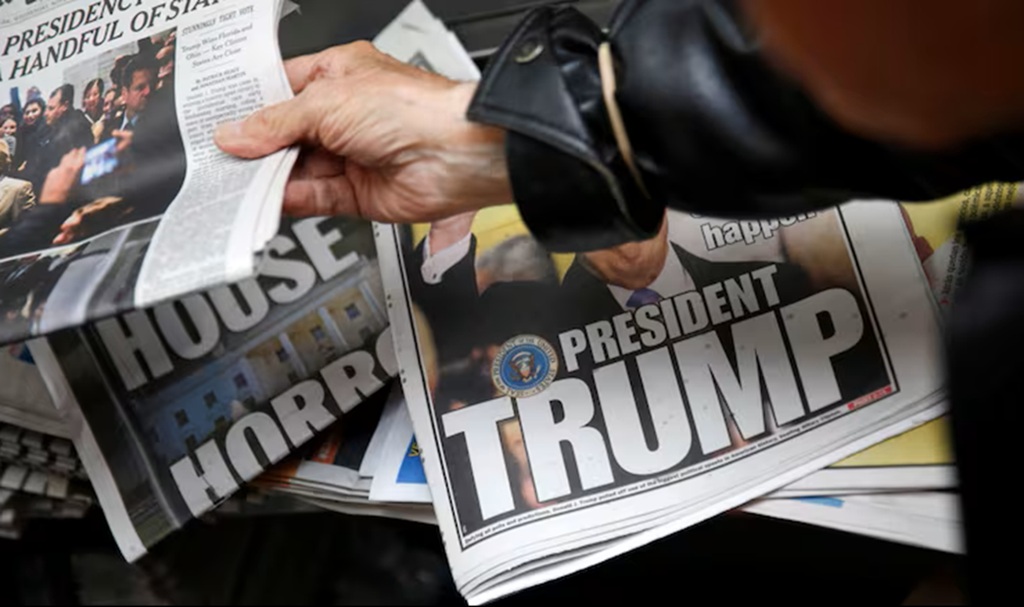
 News3 months ago
News3 months agoTrump’s Ukraine Peace Push Met with Mainstram Media Maelstrom
-

 News1 month ago
News1 month agoPeace Prize Awared to Venezuela’s María Corina Machado
-
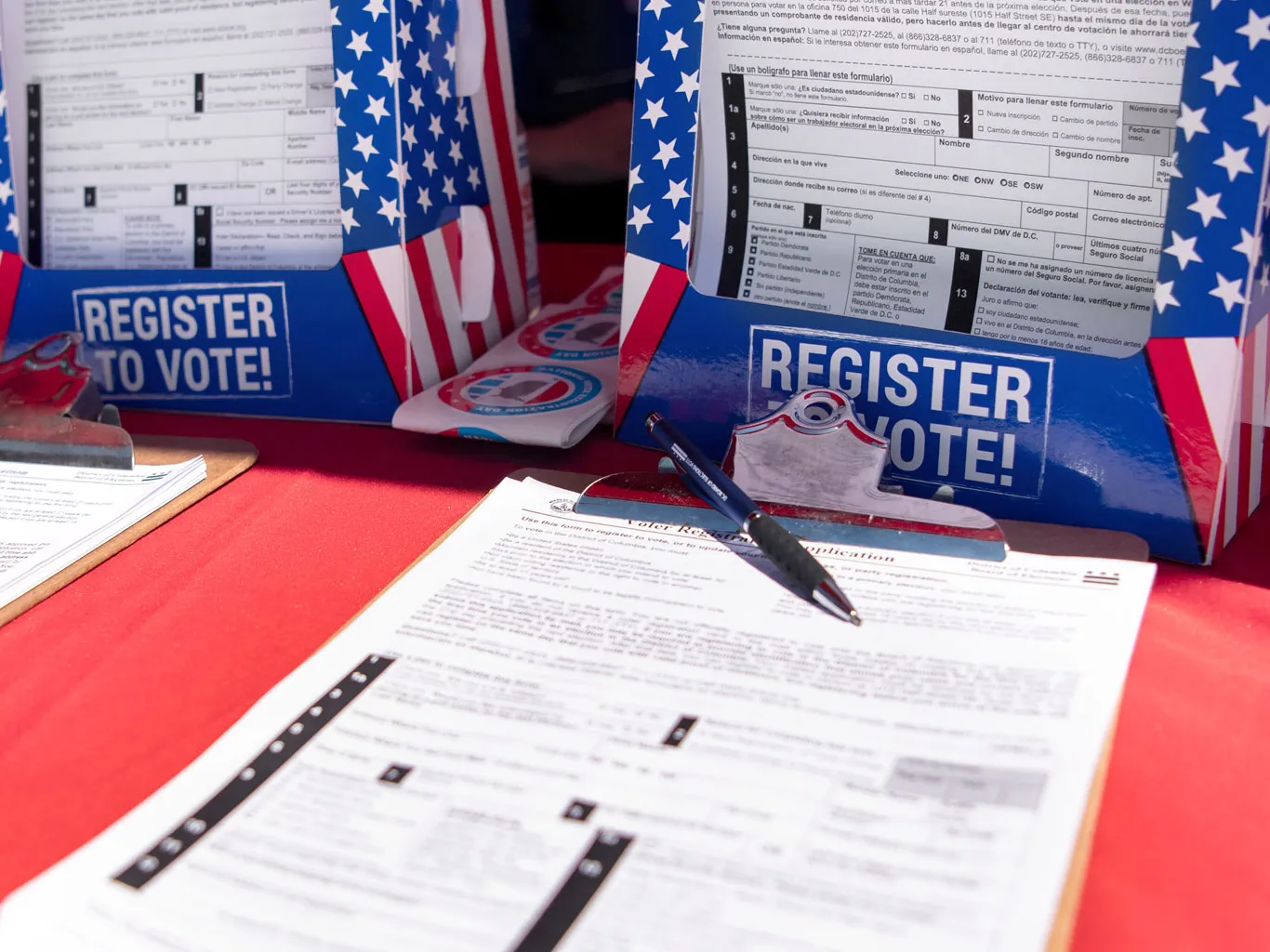
 News3 months ago
News3 months agoDemocratic Party is Facing an Existential Crisis as it Hemorrhages Voters
-

 Politics1 month ago
Politics1 month agoFar Left Socialist Democrats Have Taken Control of the Entire Party
-
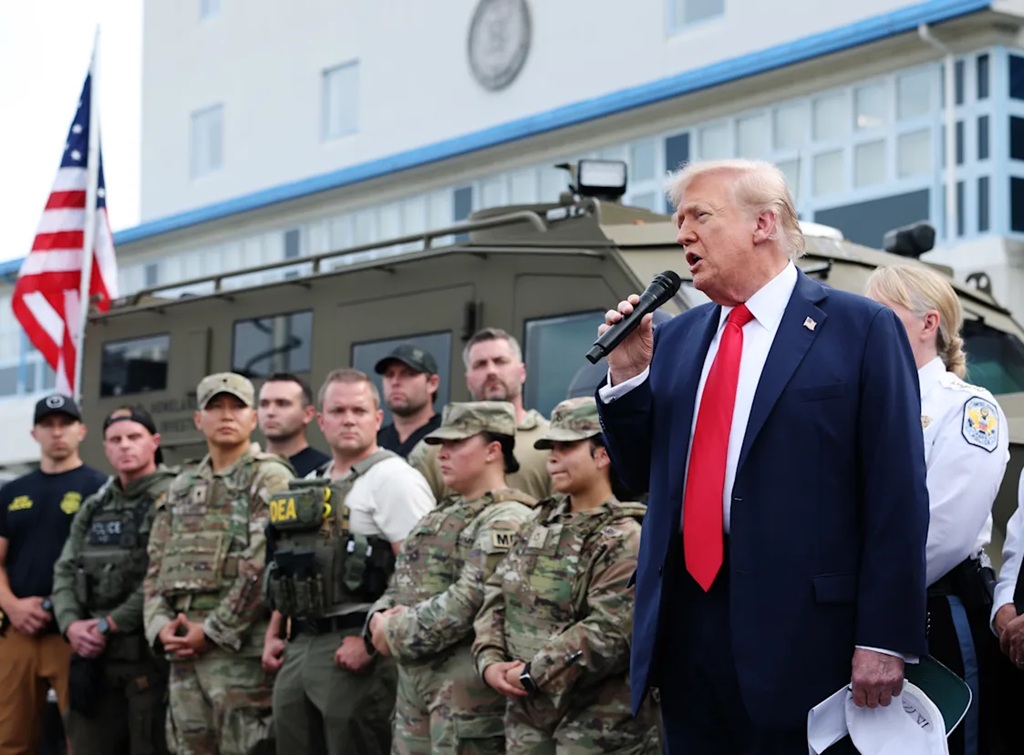
 News3 months ago
News3 months agoDemocrat Mayors Reject Trump’s Help as Crime Explodes in Blue Cities
-

 Politics1 month ago
Politics1 month agoHistorian Victor Davis Hanson Talks on Trump’s Vision for a Safer America
-

 Asia3 months ago
Asia3 months agoAsia Cup 2025: BCCI Confirms Indian Team Selection for
-

 News3 months ago
News3 months agoJasmine Crockett Faces Backlash as Texans Question Her Authenticity and Conduct













